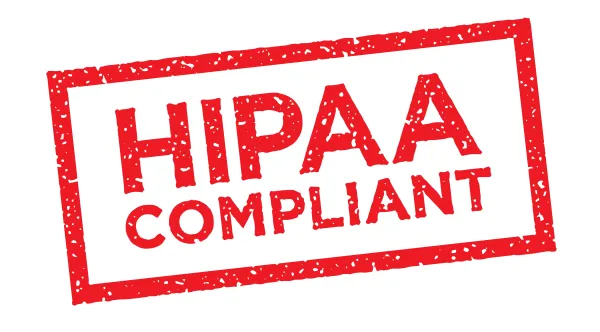Part B Insider (Multispecialty) Coding Alert
Dodge These Perennial E/M Issues Found in the CERT Report

Watch your "medical decision making" documentation to keep claims on track.
If evaluation and management (E/M) services are the foundation of your practice income – but your bottom line looks dismal – you may want to revisit your coding compliance plan to ensure you're getting the pay you deserve.
Why Is E/M Coding Such a Problem?
E/M claims are a major issue for Medicare Part B providers and weigh heavily in the CERT data in the 2016 Medicare Fee-for Service Improper Payment Rate Report out this past July. With a 14.3 percent error rate in 2016, E/M services persist in causing problems for CMS and account for 10.9 percent of the overall FFS improper error rate. The incorrect payments came in at around $4.5 billion.
Reasoning: From upcoding issues to negligent notes, practices often drop the ball because coders fail to take into account how the claims records look to a third-party reader. "Coders who work with the same doctor or doctors over the years get to know their style or what they 'really mean' and go ahead and code as though the documentation was correct," says Marcella Bucknam, CPC, CCS-P, COC, CCS, CPC-P, CPC-I, CCC, COBGC, manager of clinical compliance with PeaceHealth in Vancouver, Washington. "Then a payer asks for a copy of the record, and someone who doesn't already know what's going on can't figure out why the patient was seen or what care was provided."
Factors: The biggest E/M error contributors continued to be coding errors and lack of documentation. According to the CERT data, E/M claims problems arose from:
- Medical documentation submitted for claims supported a different E/M code than the one billed.
- Claims often lacked a physician's signature.
- One of the three key E/M required components was missing in the notes or not referenced in the coding, particularly "medical decision making."
- Issues related to who provided the care - physician versus non-physician practitioner - and whose National Provider Identifier (NPI) it was filed under.
- "Physicians provided services in settings other than their own offices and did not submit records maintained by hospitals or other facilities."
Ensure Your Claims Back Up the Necessity for a Higher Code
Though the proposed Medicare Physician Fee Schedule for Calendar Year 2018 (MPFS) suggested that the current E/M services required components are in the process of a revamp, for now clinicians and their staffs need to show in their documentation that they were addressed (See Part B Insider, Vol. 18, No.9).
These "key components" that determine the correct code to use include:
- History of Illness
- Physical Exam
- Medical Decision Making
CERT details: The majority of E/M subsequent and initial hospital visit claims were incorrect due to either coding errors or insufficient documentation that lacked the "medical decision making" component. The upcoded claims then had to be downcoded to match the notes CMS received.
But Medicare providers who billed E/M services for established patients had the biggest impact on the high Part B improper payment percentage - with 3.1 percent of the overall discrepancy and $1.3 billion in improper payments from specialists in the fields of internal medicine, family practice, and cardiology comprising 48.9 percent of the improper claims, the CERT report pointed out.
Rectify Your Issues with These Tips
Providers, their clinical staff, and especially their coders and billers must be on the same claims page before submitting data to a MAC. As the paper trail moves along, it's easy for the different readers to see where the careless mistakes were made. "Medicare states that when a physician signs his note, he is stating that the information in the note is correct and complete," Bucknam warns. "But when you read the note later, you know that the doctor never read through it. It was signed without reading, and it's not a good record for billing or for patient care."
According to the August 2017 update of MLN's "Evaluation and Management Services" guide, certain elements should be included in your documentation. Consider these examples from the CMS guidance:
- Reason for the encounter and relevant history, physical exam findings, and previous diagnostic test results
- Assessment, clinical impression, or diagnosis
- Medical plan of care
- Date and the observer's legible identity
- Physician's rationale for ordering diagnostic and other ancillary services
- Access to patient's past and present diagnoses by treating and/or consulting physician
- Appropriate health risk factors
- Patient's progress, response to, and changes in treatment, including any diagnosis revisions
Reminder: If you clean up your documentation, making it clear and complete, you not only will overcome the problem of insufficient notes but will likely eradicate coding errors, too. And not only do complete and signed notes help your bottom line, they make a difference in the long-term care of your patients.
"If there is contradictory information (i.e. chief complaint of back pain, review of system illustrating no back pain) the note could lose integrity," advises Suzan Hauptman, CPC, CEMC, CEDC, AAPC Fellow, principal at Ace Med Group in Pittsburgh. "It could cause problems with patient care in the future. If another doctor (or the author) uses this note to understand the patient's condition, there could be confusion that could result in incomplete care or repeated tests."
Resource: To access the MLN Evaluation and Management Services guide, visit www.cms.gov/Outreach-and-Education/Medicare-Learning-Network-MLN/MLNProducts/Downloads/eval-mgmt-serv-guide-ICN006764.pdf.
Related Articles
Part B Insider (Multispecialty) Coding Alert
- Correct Coding Initiative:
Keep Abreast of the NCCI Edits for Bundled Surgical Procedures
Modifier 59 often factors into the claims equation. Coders consider the National Correct Coding Initiative [...] - MACRA:
Are You Eligible to Report Measures in a Virtual Group? Find Out Here
If reporting under MIPS has you worried, a Virtual Group might be for you. Medicare [...] - Compliance:
Dodge These Perennial E/M Issues Found in the CERT Report
Watch your "medical decision making" documentation to keep claims on track. If evaluation and management [...] - Part B Coding Coach:
Master Abdominal Pain Coding with These 4 Steps
Substantiate symptoms and signs of stomach suffering with this guide. What happens when a patient [...] - Physician Notes:
Mark Your Calendars for NPI Requirement Date
Plus: The ICD-10 mapping tool is going away soon. If you've lagged behind on using [...]




